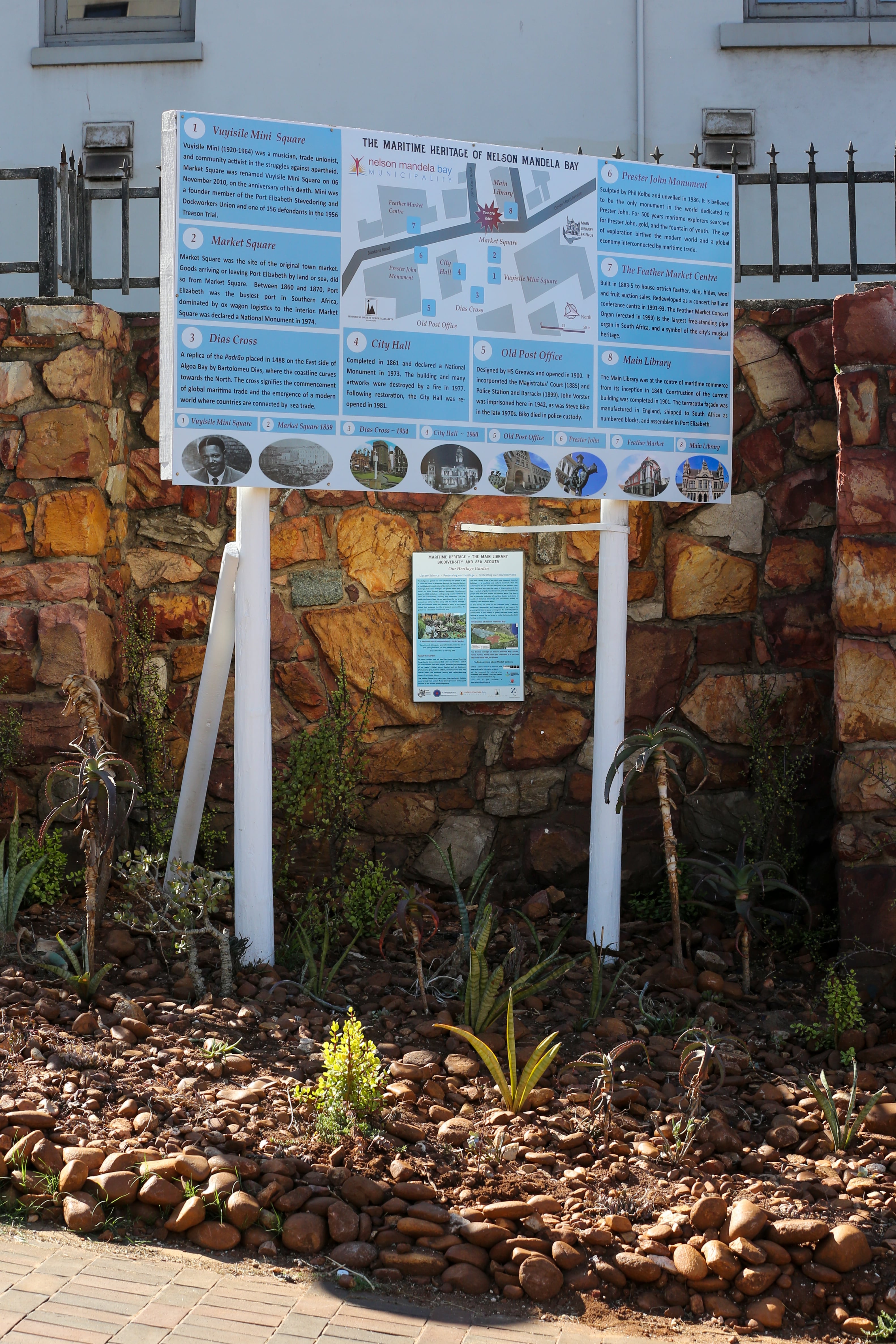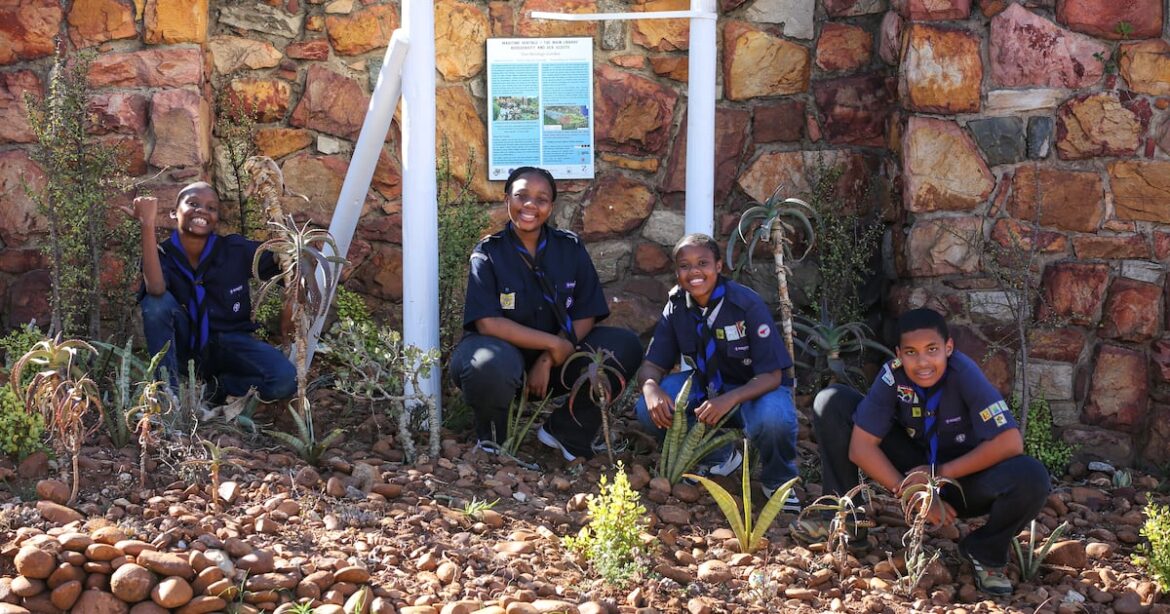The St Croix Sea Scouts have dived into the thicket of things with an inner city garden project linking Nelson Mandela Bay’s maritime heritage with its cultural and environmental roots.
Together with the new indigenous thicket garden, smart signage has been erected, directing visitors to the different attractions in the area, and reflecting the city’s unique historical tapestry.
Funded by tourist donations and the Historical Society of Port Elizabeth, the project was implemented by the St Croix Sea Scouts of Bluewater Bay and the society, together with the Friends of the Main Library, the Zwartkops Conservancy and the metro.
It was done to celebrate the Scouts SA national challenge, which in 2025 is “our heritage”.
And it also forms part of the Scouts for SDGs (the UN Sustainable Development Goals for 2030) initiative, which seeks to unite young people worldwide in action for sustainability, equality, and community.
St Croix Sea Scouts scoutmaster Norman Visser said the scouts had researched the signage, participated in the plant rescue from Coega, and replanted them in their new bed.
“It’s a wonderful way for the scouts to learn about their past, and develop greater awareness of the role of indigenous plants in our heritage.
“Through this heritage challenge we have developed a new understanding of our roots back to antiquity, the way in which plants were used by indigenous communities, and the centrality of Algoa Bay in the development of global maritime trade.
“We are thrilled we could participate.”
 The dilapidated old sign next to the main library before it was replaced with the smart new signage (Supplied)
The dilapidated old sign next to the main library before it was replaced with the smart new signage (Supplied)
Historical Society of PE chair Graham Taylor said the site for the new garden, adjacent to the Main Library in Gqeberha’s old CBD, was chosen for its position at the centre of things.
“The aim is to connect our city: from the maritime trade that shaped it, to the coastal thicket that sustained the life of ancient communities.”
He said all the plants, stone and soil used were rescued from the Coega Special Economic Zone before construction.
“Species such as spekboom, ox tongue and various aloes reflect the resilience, beauty, and carbon-absorbing power of our thicket biome.”
He said the cobbles or distinctive large stones relocated with the plants were much more than aesthetics.
 The new indigenous thicket garden and smart signage, directing visitors to the different attractions in the area, and reflecting the citys unique historical tapestry (Werner Hills)
The new indigenous thicket garden and smart signage, directing visitors to the different attractions in the area, and reflecting the citys unique historical tapestry (Werner Hills)
“They were formed from ancient river processes and they support the soil and the thicket vegetation itself.”
Taylor said the Main Library was one of the city’s most treasured historical buildings.
“It’s a maritime and cultural landmark that has watched over the city since the early days of the harbour.
“From there, one could once see the masts of ships anchored in the bay — the symbols of global maritime trade, and the movement of people and ideas that shaped our modern world.”
He said five biomes or plant and habitat nodes converged in the Bay: thicket, forest, fynbos, nama Karoo and grassland.
“It is the only city in the world with five biomes.
“By greening this historic space here in the inner city, we recognise the centrality of local communities in the advent of global maritime trade, while helping to restore life and pride to a site that embodies both heritage and learning.”
Zwartkops Conservancy spokesperson Femke de Wet said people were increasingly starting to realise the importance of indigenous vegetation for maintaining natural processes in urban areas, and mitigating climate change.
“Our city centre has so much potential for greening, and this garden shows how indigenous vegetation can bring vibrancy and life into urban spaces.
“Our thicket biome is ideal for incorporation into urban landscaping.
“These gardens are water-wise, easier to maintain, and they reduce costs in the longer-term.
“By embracing nature-based horticultural practices, we can create beautiful, resilient urban landscapes that reflect our region’s unique ecological heritage.”


Comments are closed.